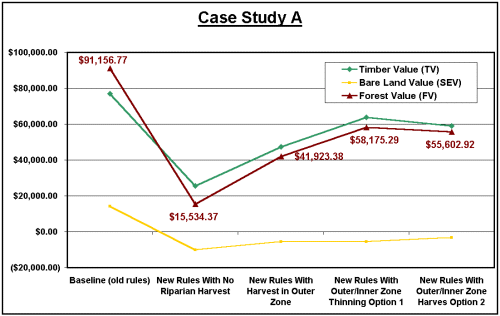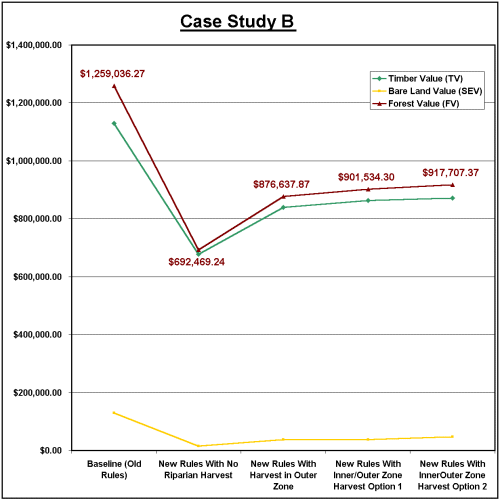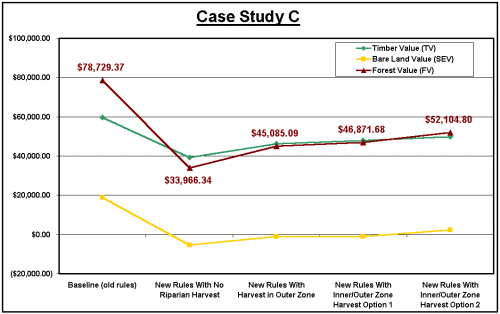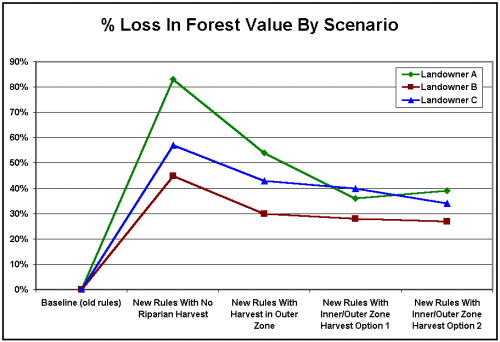 |
 |
 |
 |


Winter 2001, Vol. 1, No. 1
|
... cont. from page 1
 Figure 1. Case Study B consists of 154 acres, with 46% of the land in riparian buffers. The results are similar to Case Study A. Thetheforestvaluedroppedfrom$1,259,036 to $692,469 under the no riparian harvest option, with much of that value being recovered by managing in the outer and inner zones (figure 2). Since a lower proportion of the property is in buffers, the bare land value stays positive in this case study, but it is significantly reduced
 Figure 2. Case Study C is comprised of 67 acres, with 45% of the land in buffers. Like cases A and B, the forest value drops significantly when no riparian management is done, but some of the loss is recovered under the last two scenarios (figure 3).
 Figure 3. Figure 4 shows the loss in total forest value on a percentage basis. Under the no riparian management scenario, the disparity of losses ranges from 83% to 45%. The percentage loss is reduced significantly by managing in the riparian zone, and the disparity of losses is reduced as well. Some caution should be exercised when interpreting these results. The costs of managing within the riparian zone may be site specific and could offset some of the benefits illustrated. The state intends to provide conservation easements that would recapture some of the timber value loss but this will have no impact on the land value (figure 4).
 Figure 4. These case studies still illustrate several important points, however. There is indeed a disparity of losses across different landowners, and the losses for some NIPF landowners is much greater than the 26% average that has been calculated by the SBEIS. Theses studies also show that the size of the losses and the disparity of the losses can be partially mitigated by managing in the riparian zone to the extent allowed under the rules. However, so far most NIPF landowners who are submitting forest practice applications are choosing not to manage at all in the riparian zone, which may be the "worst case" scenario from a financial perspective. Additional case studies are planned throughout the state, with an
examination of the options for small landowners to participate in a
state-sponsored conservation easement program or to develop
alternative plans that might provide equivalent habitat protection
at a lower cost. |


